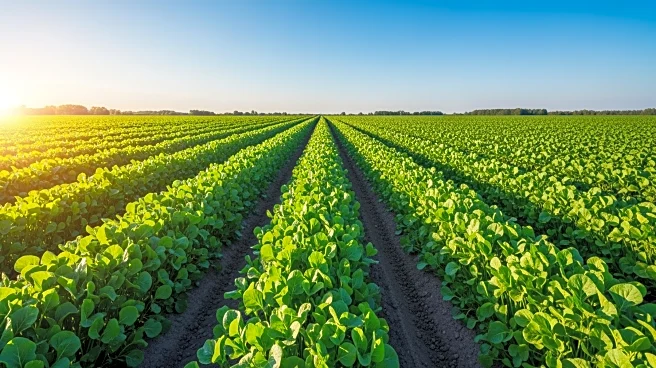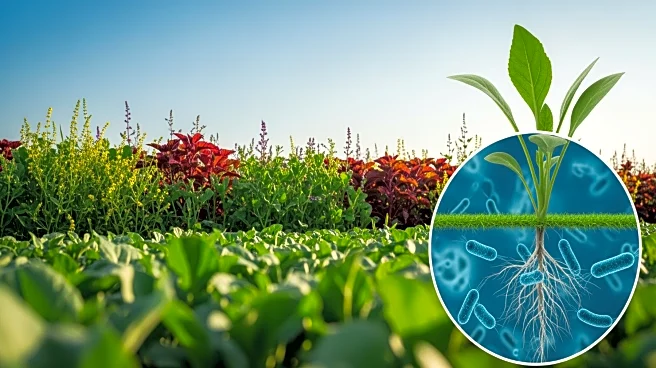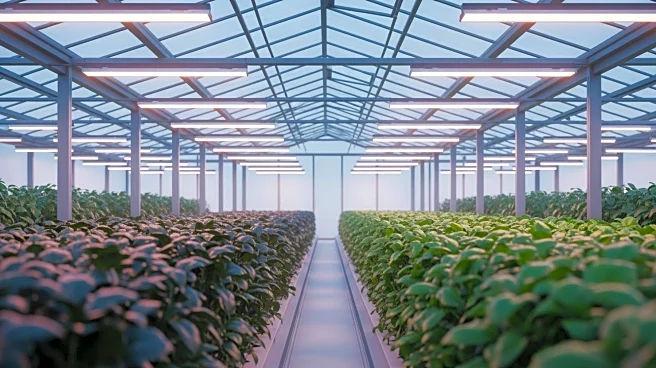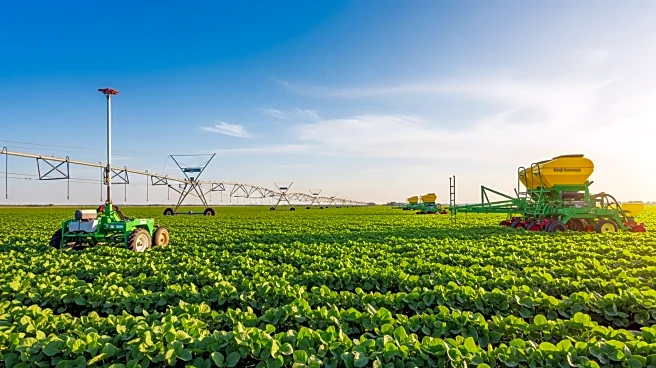What's Happening?
The regenerative agriculture market is experiencing significant growth, with projections indicating it will reach $48 billion by 2032, up from $14.5 billion in 2025. This growth is driven by a shift towards sustainable food systems that prioritize soil
health, biodiversity, and ecosystem resilience. Regenerative agriculture practices, such as crop rotation, cover cropping, and minimal tillage, are gaining traction as they offer long-term sustainability and productivity benefits. The market expansion is fueled by climate change pressures, food security concerns, and environmental degradation, prompting a reevaluation of global food production methods. Key growth drivers include government support for sustainable practices, corporate commitments to regenerative sourcing, and rising consumer demand for environmentally responsible food products.
Why It's Important?
The expansion of the regenerative agriculture market is crucial for addressing climate change and enhancing food security. By improving soil health and increasing biodiversity, regenerative practices contribute to carbon sequestration, which is vital for mitigating greenhouse gas emissions. The market's growth also reflects a broader shift towards sustainable food production, with consumers increasingly favoring brands that prioritize ethical sourcing and environmental stewardship. This trend is reshaping supply chains and encouraging corporations to partner with farmers adopting regenerative practices. Additionally, the economic benefits for farmers, such as improved soil fertility and reduced dependency on synthetic inputs, enhance profitability and resilience against climate-related challenges.
What's Next?
The regenerative agriculture market is expected to continue its rapid expansion, driven by technological innovations and policy support. Digital agricultural technologies, such as AI-based crop management and satellite monitoring, are revolutionizing how farmers implement and track regenerative practices. Government subsidies and public-private partnerships are strengthening the policy framework for regenerative agriculture, further incentivizing adoption. As carbon credit programs gain traction, farmers may benefit from new revenue streams by selling carbon offsets. The Asia-Pacific region is anticipated to witness the fastest growth, supported by large-scale land restoration projects and government-backed sustainable agriculture missions.
Beyond the Headlines
The rise of regenerative agriculture presents deeper implications for global food systems and environmental sustainability. By prioritizing soil health and biodiversity, regenerative practices offer a holistic approach to agriculture that aligns with broader climate mitigation strategies. The integration of digital technologies enhances traceability and transparency, which are critical for scaling regenerative agriculture globally. However, challenges such as the lack of standardized metrics for measuring regenerative outcomes and the initial cost of transition remain. Overcoming these obstacles will require stronger collaboration between governments, agribusinesses, and research institutions.













